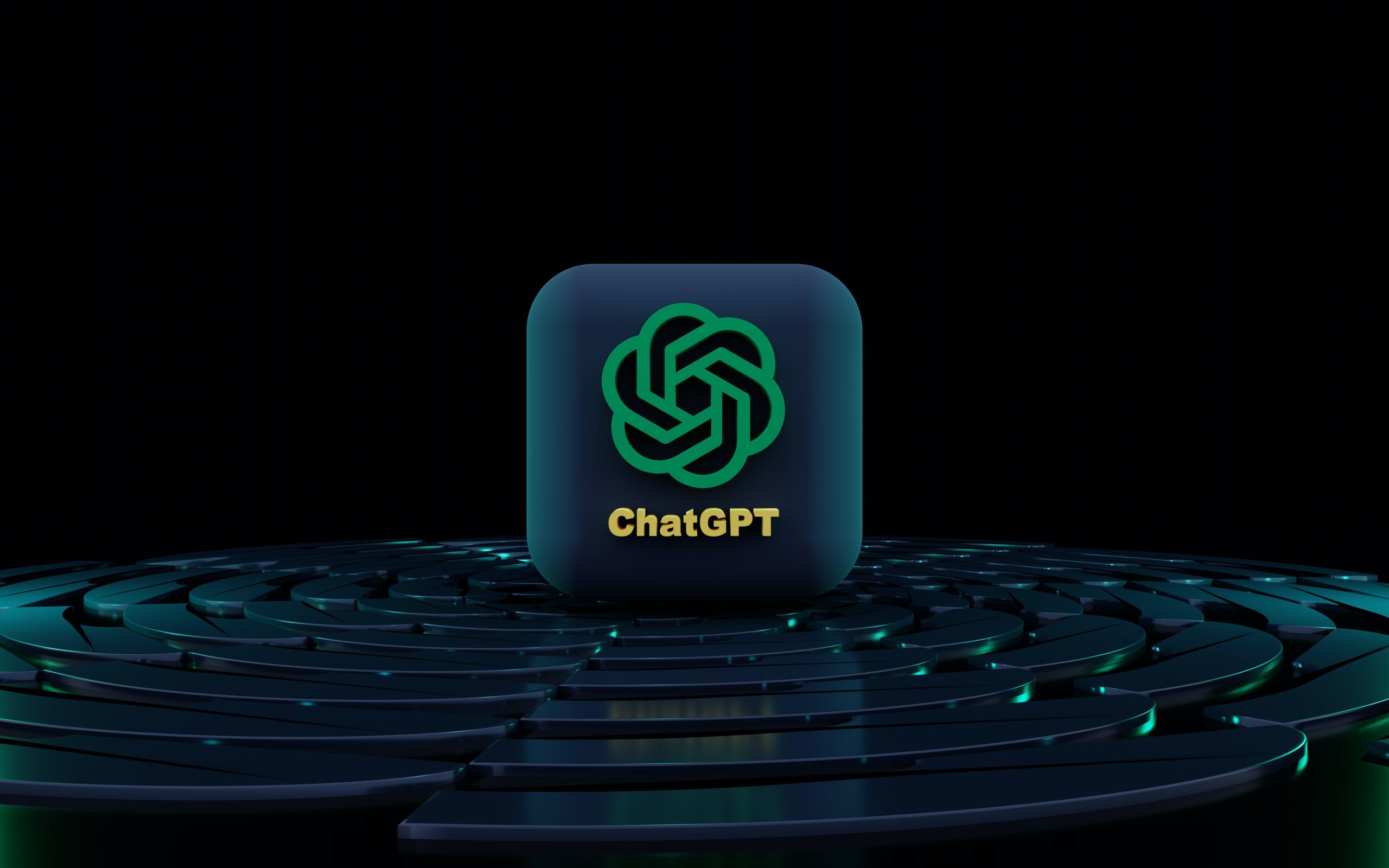OpenAI, a startup based in San Francisco, has made significant waves by creating ChatGPT, a prime example of generative AI technology. Founded in 2015 by Elon Musk and Sam Altman, OpenAI has garnered considerable attention with notable backing from prominent investors, including Microsoft.
Prior examples include Dall-E, an OpenAI text-to-image program that catches the attention of many with its capability to generate realistic and sometimes bizarre pictures that perfectly match text descriptions provided by its users. Moreover, Lensa, an app built on the open-source AI project Stable Diffusion, allows users to transform their selfies into impressive self-portraits inspired by various themes, including sci-fi and anime.
ChatGPT is a text-based tool that provides human-like responses to user inquiries. It all started with OpenAI’s release of GPT-2 in 2019, which gained attention for its impressive text generation capabilities. In November 2020, OpenAI introduced the research preview of ChatGPT, an AI chatbot system based on GPT-3, the next iteration of the model.
Building upon the success and insights garnered from GPT-3 and the research preview of ChatGPT, OpenAI has made substantial progress in developing a more refined and improved model. In this article, we explore the capabilities and features of this upgraded AI model and uncover the valuable experiences it can provide.
What is ChatGPT?
ChatGPT is an advanced AI chatbot developed by OpenAI. It leverages state-of-the-art natural language processing (NLP) techniques to converse conversations with users and provide intelligent responses. ChatGPT has captivated users worldwide with its ability to generate human-like text and hold meaningful discussions on various topics, as one of the most prominent examples of generative AI.
Powered by deep learning algorithms and trained on massive datasets, ChatGPT exhibits exceptional language understanding and generation capabilities. It can comprehend and respond to user prompts, whether they are questions, requests, or prompts for creative writing. Through its conversational abilities, ChatGPT creates an interactive and engaging experience, enabling users to interact with an AI system conversationally.
What is ChatGPT used for?
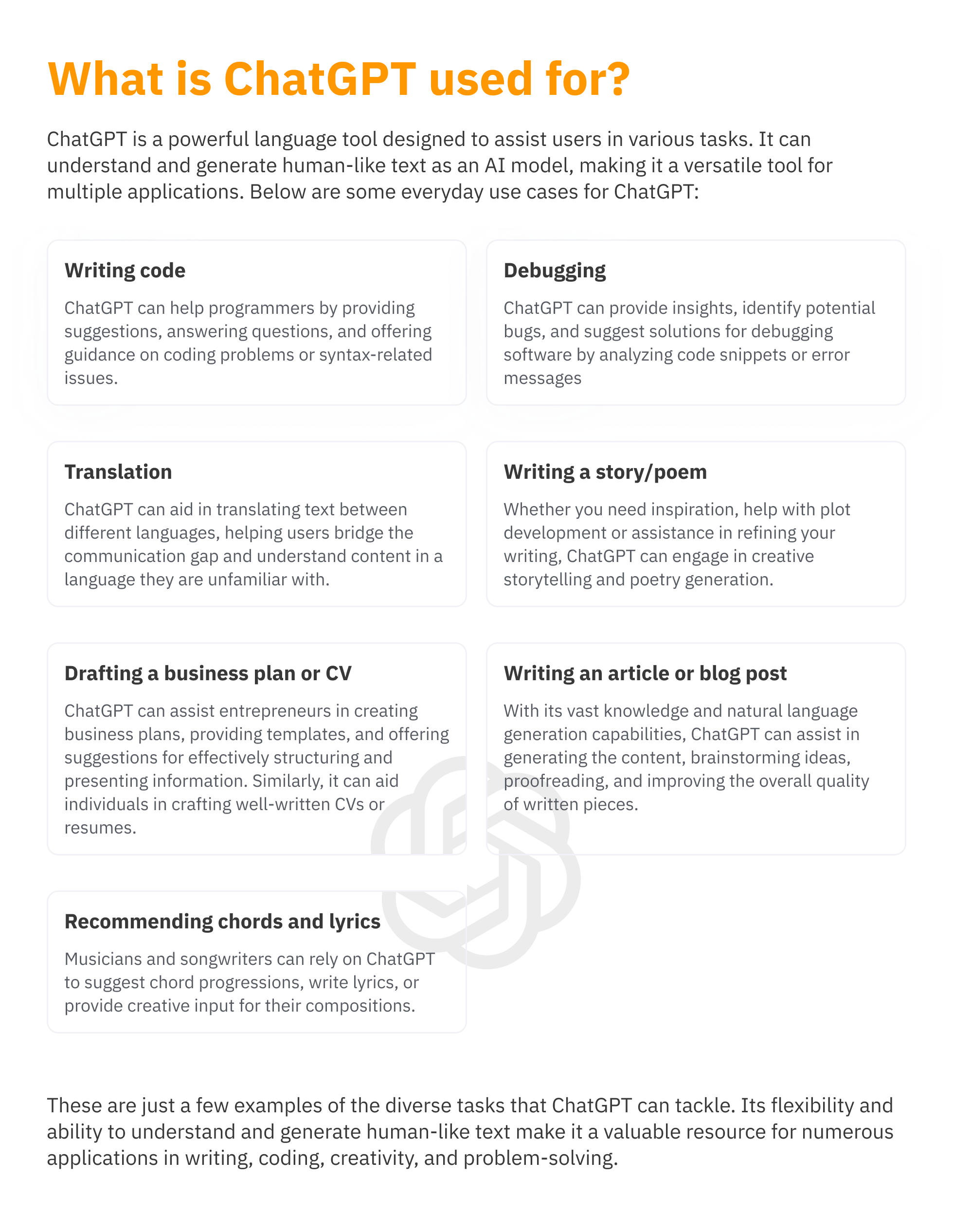
How does ChatGPT work?
ChatGPT is powered by the GPT (Generative Pre-trained Transformer) architecture developed by OpenAI. It utilizes deep learning techniques to understand and generate text. ChatGPT is trained on vast amounts of data from the internet, allowing it to learn patterns, grammar, and contextual information.
The training process involves exposing the model to a large text corpus and predicting the next word or phrase based on the context. ChatGPT learns to generate coherent and contextually relevant responses by repeatedly training on massive datasets. It captures the statistical relationships between words and uses this knowledge to generate text that resembles human language.
ChatGPT relies on transformers, which are attention-based neural networks. These transformers can process long sequences of text and capture long-range dependencies. They learn to attend to different parts of the input text, assigning importance to relevant context and generating responses that align with the given input.
OpenAI consistently improves ChatGPT through iterative updates, refining its capabilities and resolving limitations. The widely recognized version, ChatGPT-3, offers free access to the tool with limited attempts per hour. The Plus version will provide a more advanced model, ChatGPT-4, incorporating significant improvements in contextual understanding, reasoning, and generating highly dependable responses. These advancements will make the model even more versatile, capable, and closer to achieving human-like interactions.
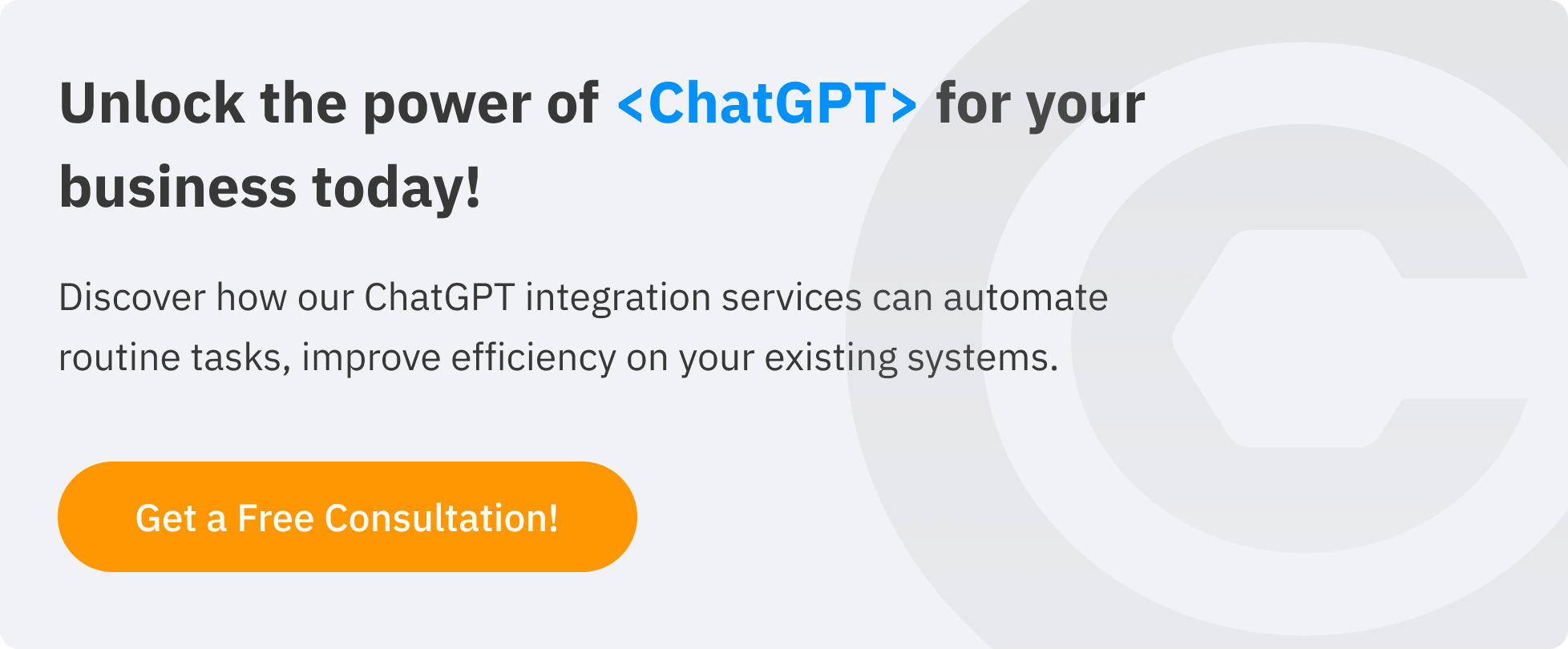
6 Key Features of ChatGPT
Human-Like Responses
ChatGPT stands out for its remarkable ability to provide responses that resemble human interaction. By emulating human conversation patterns, ChatGPT can interact with users, understand queries, and respond authentically and relatable. It leads to seamless integration of ChatGPT into various applications and scenarios. Here are examples of real-world integrations:
- Customer Service Chatbots
Many companies have integrated ChatGPT into customer service systems to provide personalized and conversational support. These chatbots are designed to understand customer queries, provide helpful responses, and create a more engaging and human-like interaction. One of the most significant examples is My AI powered by Snapchat, a virtual assistant that gives personalized recommendations to Snapchat premium users based on their requests. These can include creating gift lists, writing dinner recipes, or even planning a trip for a weekend. - Language Tutoring Platforms
Language learning platforms often leverage ChatGPT to simulate conversations with native speakers or language tutors. For instance, Duolingo has integrated with the latest GPT-4 version to deliver highly-personalized language lessons and new features. - Mental Health Chatbots
ChatGPT has been integrated into mental health support platforms to offer empathetic and understanding responses to individuals seeking assistance. These chatbots provide a safe space for users to express their feelings and concerns, offering human-like responses that help alleviate distress and provide guidance. - Content Creation Tools
Some content creation platforms utilize ChatGPT to assist writers, marketers, and creators generate high-quality content. Chatbots provide suggestions, answer questions, and even help with creativity, enhancing the writing process by giving human-like responses that align with the user’s creative needs. - Virtual Assistants and Smart Home Devices
ChatGPT powers virtual assistants and smart home devices, allowing users to interact with them through natural language conversations. These chatbots offer a more intuitive and seamless user experience by providing human-like responses, performing tasks, answering questions, and controlling connected devices.
Personalization
The personalization feature of ChatGPT allows users to tailor their interactions and responses based on their specific preferences and needs. This feature enables ChatGPT to learn from past conversations and adapt its responses to individual users, making the interactions more personalized and engaging. ChatGPT can provide more relevant and customized information, recommendations, and assistance by considering the user’s context, history, and preferences.
Moreover, personalization can significantly improve the effectiveness of ChatGPT in various domains. For instance, in customer support applications, personalized responses can address specific customer inquiries and provide tailored solutions. In a content generation, such a feature can ensure that the generated result aligns with the target audience’s preferences and interests.
Sentiment Analysis
Sentiment analysis is essential to ChatGPT’s capabilities and is crucial in understanding and responding appropriately to users’ emotions, opinions, and attitudes. By analyzing the sentiment behind user input, ChatGPT can discern whether the user expresses positive, negative, or neutral feelings.
In customer service applications, sentiment analysis helps ChatGPT identify frustrated or dissatisfied customers promptly. It can then provide appropriate solutions or escalate the issue to a human representative if necessary. It helps in addressing customer concerns effectively and improving overall customer satisfaction.
Furthermore, sentiment analysis in ChatGPT aids in content moderation by identifying and flagging potentially offensive or inappropriate user inputs. This feature helps maintain a safe and respectful environment for users during interactions.
Text Condensation
This ChatGPT enables the AI model to summarize and condense lengthy text into more concise and digestible formats. Due to its numerous benefits, this feature is precious for businesses, integrations, and personal use.
The text condensation feature helps businesses efficiently process and understand large volumes of information. It allows enterprises to extract critical insights, summarize reports, and condense lengthy documents, saving time and effort.
On a personal level, the text condensation feature is beneficial for managing information overload. It helps individuals to summarize and digest extensive articles, research papers, or even personal notes. It simplifies the process of learning, studying, and staying updated on various topics, saving time and improving overall productivity.
Multilingual Assistance
The multilingual support feature in ChatGPT allows the AI model to understand and generate responses in multiple languages. This feature offers several benefits and advantages for both businesses and individuals:
- Global Reach
Multilingual support enables businesses to engage with a broader audience and expand their reach to customers from different language backgrounds. It facilitates effective communication and provides a seamless user experience for customers worldwide. - Language Flexibility
With multilingual support, individuals can interact with ChatGPT in their preferred language, eliminating language barriers and ensuring inclusivity. It caters to diverse linguistic needs and accommodates users needing to be fluent in a particular language. - Localization
ChatGPT’s ability to understand and generate responses in multiple languages allows content localization. Businesses can provide tailored and culturally relevant information to users in different regions, enhancing customer satisfaction and connection. - Market Expansion
Multilingual support enables businesses to enter new markets and effectively target international customers. It allows for providing customer support, product information, and marketing materials in different languages, facilitating business growth and market penetration. - Language Learning and Translation Assistance
Individuals can leverage multilingual support in ChatGPT to practice and improve their language skills. It can be a valuable tool for language learners, providing conversational practice and language assistance. Additionally, it can assist with quick translations, making it a convenient resource for multilingual communication.
Integration with Other Tools
ChatGPT exhibits excellent compatibility with other tools, making it a versatile and valuable addition to various workflows. Here are a few reasons why ChatGPT’s compatibility makes it a great feature:
- API Integration
OpenAI offers an API enabling developers to integrate ChatGPT into their applications, platforms, or services. This compatibility allows for easy access and utilization of ChatGPT’s conversational abilities within a customized environment. - Language Libraries and Frameworks
ChatGPT is designed to be compatible with various programming languages, libraries, and frameworks. This flexibility enables developers to seamlessly incorporate ChatGPT into their preferred programming environment, leveraging its capabilities without significant integration challenges. - Data Integration
ChatGPT can be integrated with data sources and APIs to enrich its responses and provide more accurate and context-aware information. By integrating with external data, such as product catalogs, knowledge bases, or real-time information, ChatGPT can offer more relevant and up-to-date responses to user queries. - Workflow Integration
ChatGPT can be integrated into existing workflow systems and processes, streamlining interactions and automating tasks. Whether assisting in customer support or data analysis, ChatGPT’s compatibility allows for efficient integration into established workflows, improving productivity and efficiency.
Benefits of Using ChatGPT
ChatGPT offers many benefits that make it a powerful tool for many applications. Check out some advantages of using this incredible AI tool:
Time-Saving
One of the primary advantages of Chat GPT is its ability to automate tasks and expedite data retrieval. For example, generating code, writing content, or creating marketing materials can be done quickly with ChatGPT, saving valuable hours and increasing overall productivity. This efficiency translates into cost savings by minimizing labor costs and enabling users to focus on other essential aspects of their work.
Cost-Effective
In addition to time savings, Chat GPT offers cost-effective advantages. Its predecessor, the GPT-3 language tool, was often expensive and inaccessible to many users. However, Chat GPT outperforms its competitors by automating more tasks, delivering fast results, providing accurate data, and, notably, being free to use. Moreover, Chat GPT optimizes resource allocation within companies, freeing up personnel to focus on other critical business operations. This AI tool is a cost-effective solution by boosting productivity and offering an impressive return on investment (ROI).
24/7 Support
ChatGPT can provide instant assistance to users whenever needed by offering round-the-clock support. Even during peak periods, when customer inquiries surge, ChatGPT remains responsive and can accommodate numerous users concurrently, maintaining a seamless and efficient support experience. It ensures a positive user experience and promptly addresses users’ needs, making it a valuable asset for businesses and individuals.
Access to Specific Data
One significant advantage of Chat GPT is its ability to provide specific data. With its vast knowledge base and language comprehension, Chat GPT can retrieve and present accurate information tailored to the user’s specific data requirements. Whether factual information, statistics, or domain-specific data, Chat GPT delivers the desired data promptly and effectively. This capability makes it a valuable tool for users seeking precise and reliable information.
Versatility and Adaptability
This AI language model can handle various tasks and contexts effectively. It can engage in natural language conversations, answer questions, generate creative content, and solve problems. Furthermore, ChatGPT can adapt and improve its responses over time through continuous learning from user interactions.
Limitations and challenges of ChatGPT
OpenAI recognizes that ChatGPT has certain limitations and may occasionally produce incorrect or nonsensical answers, a phenomenon called “hallucination.” These limitations are inherent to large language models. The reward model used to train ChatGPT, which relies on human oversight, can sometimes lead to over-optimization, negatively impacting its performance.
It’s important to note that ChatGPT’s knowledge is limited to events that occurred before September 2021. To ensure an accurate representation of information beyond this cutoff date, ChatGPT may require updates in its responses.
During the training of ChatGPT, human reviewers favored longer answers, even if they weren’t necessarily accurate or understandable. This approach revealed that the training data had an algorithmic bias. For instance, when provided with descriptions of individuals, ChatGPT sometimes generated biased responses that suggested women and scientists of color were inferior to white male scientists. These outputs raise concerns about the fairness and equality of the model’s responses.
How to Start Using ChatGPT
To sign up for ChatGPT, you can register using any of your existing email addresses and provide a mobile number. Follow these simple steps to complete the registration process.
- Access the platform: ChatGPT is available as a web-based interface provided by OpenAI or as an application built using the ChatGPT API.
- Create an account: If required, sign up for an account on the platform to get started. This step may involve providing some basic information and agreeing to the terms of service.
- Understand the guidelines: Take a moment to read any guidelines or usage policies the platform provides. Understanding the rules will help you navigate the interaction effectively.
- Start a conversation: Look for the chat interface or input box provided. You can type your prompts or questions to initiate a discussion with Chat GPT.
- Enter your prompt: Craft your prompt or question clearly and concisely. Make sure it conveys your intention or topic of interest effectively.
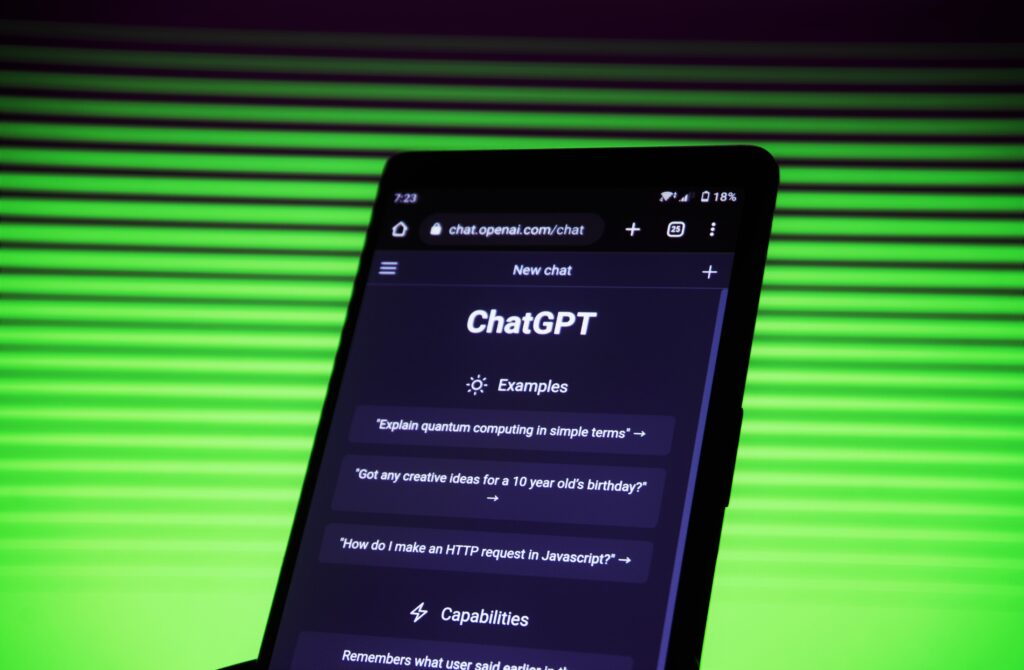
What is ChatGPT-3?
GPT-3, short for “Generative Pre-trained Transformer 3,” is an extensive language model incorporating a decoder-only transformer architecture using attention mechanisms. Unlike previous models relying on recurrence or convolution, GPT-3 leverages attention mechanisms to focus on relevant input text segments selectively.
Subsequently, Microsoft announced exclusive licensing for GPT-3 on September 22, 2020. While others can still access the public API for output, only Microsoft has privileged access to GPT-3’s underlying model.
What is ChatGPT-4?
GPT-4 is the latest addition to OpenAI’s GPT series of language models. It was publicly released on March 14, 2023, with limited availability through the ChatGPT Plus chatbot product and access to the GPT-4 based version of OpenAI’s API provided via a waitlist.
GPT-4 is a large multimodal language model that utilizes a transformer architecture like its predecessors. It was trained using public data and data licensed from third-party providers to predict the next token in a sequence. It was further fine-tuned using reinforcement learning from human and AI feedback to ensure alignment with human values and policy compliance. While GPT-4 has shown improvement compared to GPT-3.5-based ChatGPT, it still retains some of the same challenges. Notably, GPT-4 can process both text and images as input. However, specific details such as the model size have yet to be disclosed by OpenAI.
What is the ChatGPT API?
The ChatGPT API is an application programming interface offered by OpenAI that allows developers to integrate the ChatGPT language model into their applications, platforms, or services. It provides a way to programmatically interact with ChatGPT and incorporate its language understanding and generation capabilities into custom-built applications.
OpenAI offers access to the ChatGPT API, and you can visit their official website to learn more about the availability and access details. OpenAI may have specific instructions or requirements to obtain access to the API, such as signing up, joining waitlists, or following any announcements they make regarding API availability.
What are the ChatGPT Plugins
ChatGPT Plugins are tools designed to ensure safety while enabling ChatGPT to access current information, run computations, or utilize third-party services. OpenAI has introduced initial support for plugins in ChatGPT, gradually rolling them out to study their real-world impact and safety challenges.
With OpenAI plugins, ChatGPT can connect with third-party applications and interact with their defined APIs. This integration will enhance ChatGPT’s capabilities, allowing it to perform various actions. Some examples of what plugins enable ChatGPT include retrieving up-to-date information such as sports scores, stock prices, and news updates, accessing knowledge-base information like company documents or personal notes, and assisting users with actions like flight bookings or food orders.
Examples of ChatGPT prompts
ChatGPT prompts are the initial messages or queries the ChatGPT model provides to initiate a conversation or request information. These prompts serve as instructions or cues for the model to generate a response. When interacting with ChatGPT, you can provide a prompt that specifies the desired action, question, or topic you want to discuss.
Prompts can vary in complexity and involve asking questions, seeking advice, requesting explanations, or engaging in casual conversation. They provide a way to interact with ChatGPT and receive responses tailored to the input.
Here are some examples of prompts that businesses can use when utilizing ChatGPT:
Docker script

Unit test
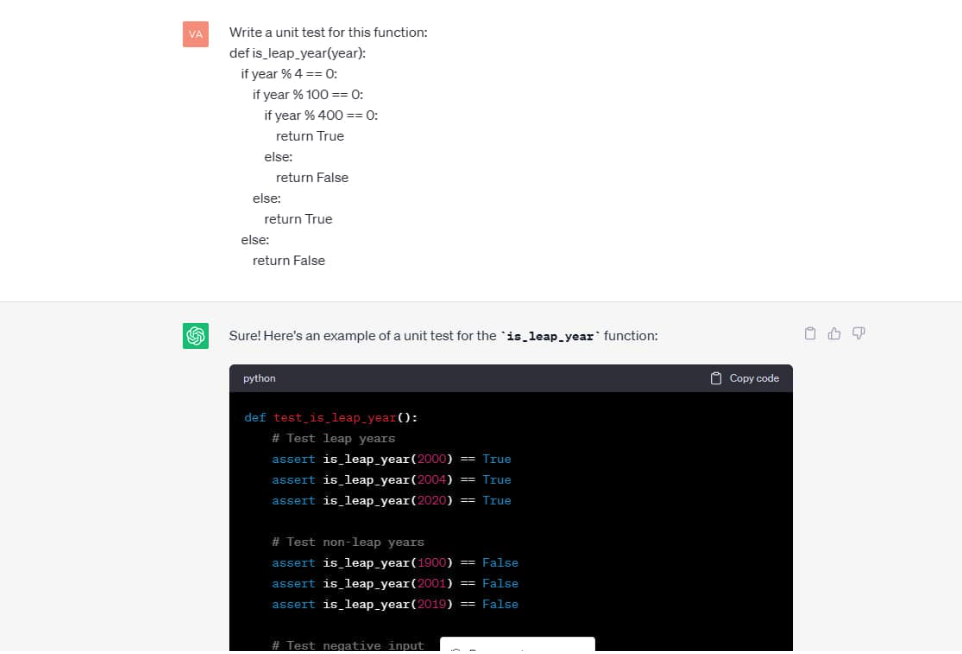
JavaScript function
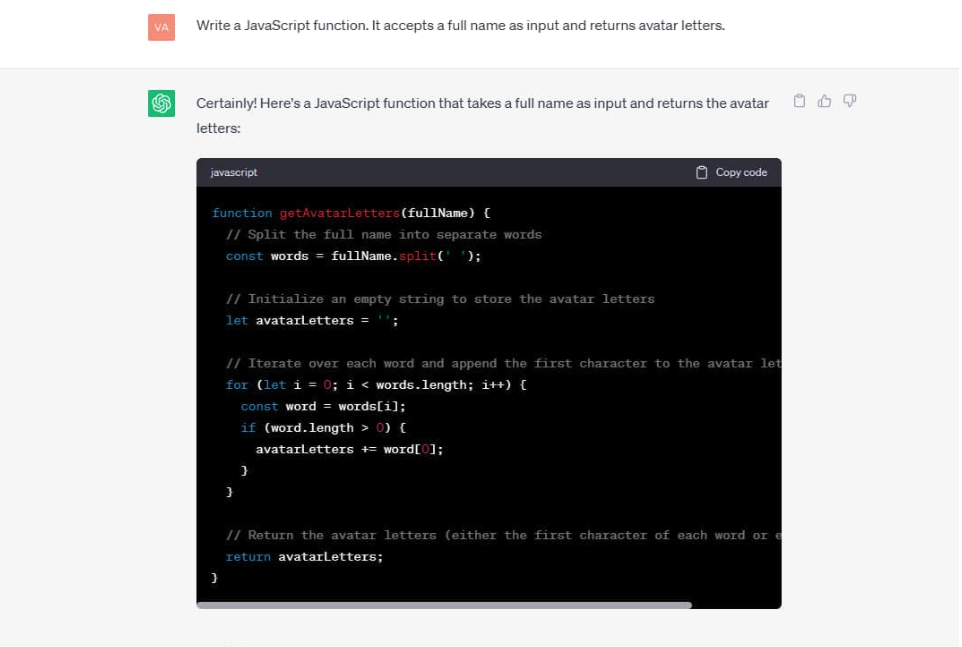
PostgreSQL query
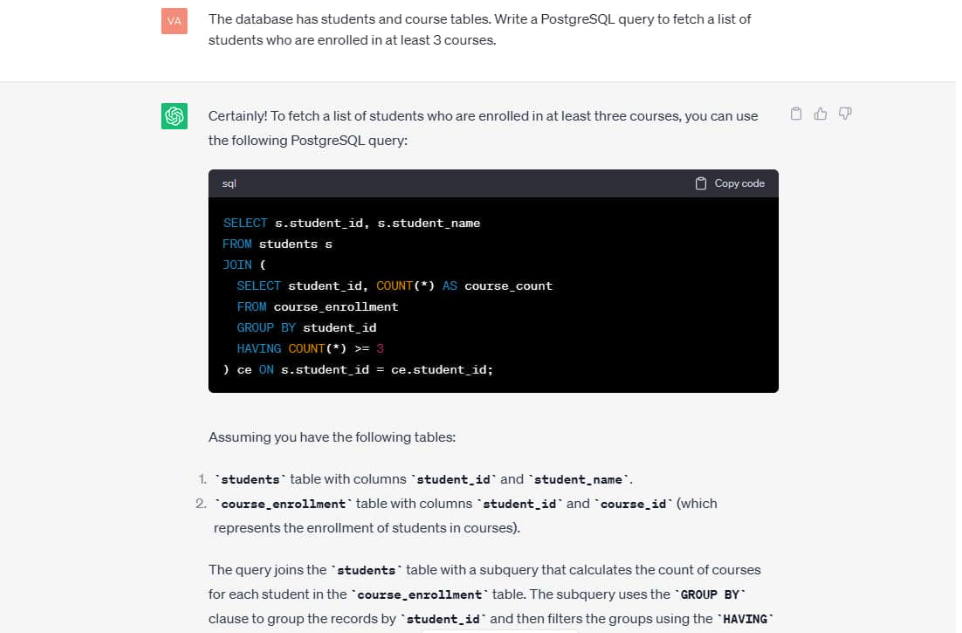
JSON object
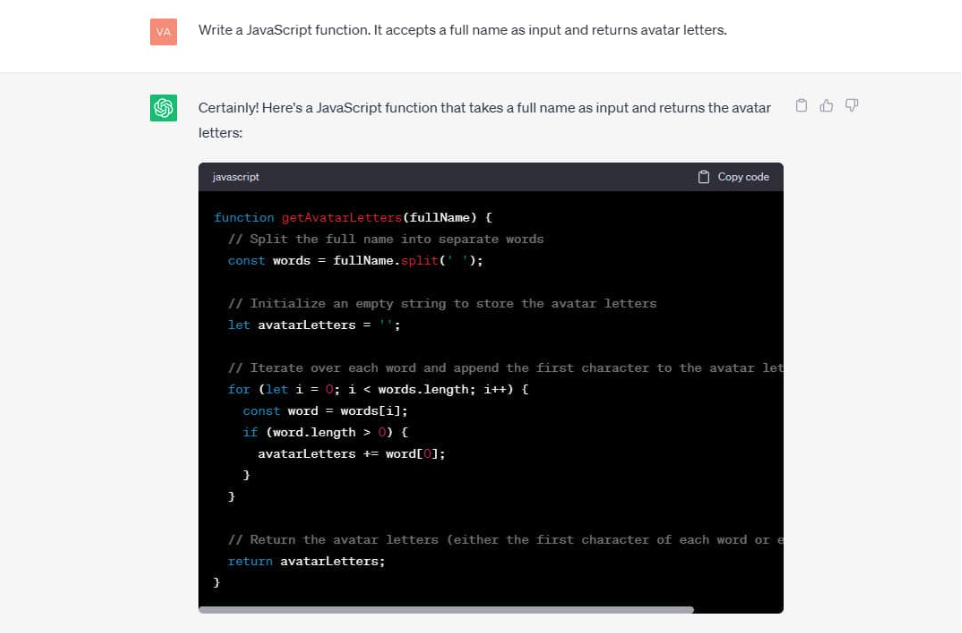
The Future of ChatGPT
OpenAI has already made significant strides in AI, having introduced ChatGPT apps and an array of exciting AI plugins. Embracing its technology, numerous companies have adopted OpenAI’s solutions in innovative and unexpected ways.
A recent example is Urtopia, an avant-garde company that made waves at EUROBIKE 2023 by unveiling the world’s first e-bike integrated with ChatGPT. In a press release, Urtopia emphasized that their smart e-bike is an exceptional companion for riders. It provides real-time assistance powered by the intelligent combination of ChatGPT and Urtopia’s advanced voice recognition features.
With continuous expansion, GPT-4 aims to become 500 times more potent than GPT-3, thanks to its extensive training set of 170 trillion parameters. Such a massive training set enables the model to understand language and context better, leading to more accurate and nuanced responses.
In light of these advancements, Bill Gates, the co-founder of Microsoft, predicts a decline in Google’s profits due to the rapid progress made by OpenAI. Indeed, the increasing adoption of ChatGPT by companies seeking AI-powered solutions is not the only noticeable trend. Kevin O’Leary, the “Shark Tank” investor, shared with Insider that he has begun favoring ChatGPT over Google for online research. He is even considering investing in OpenAI, impressed by the platform’s advancements and potential.
As you can see, the possibilities for integration and innovation with ChatGPT are endless. Your business could be the next disruptor in the market by seamlessly integrating ChatGPT into your operations. The potential for transformative solutions and enhanced customer experiences awaits, so let’s explore the possibilities together!
Final thoughts
The continuous development of AI, including conversational models like Chat GPT, prompts us to reimagine the possibilities and potentials of technology. As natural language processing and AI capabilities continue to advance, Chat GPT can become an indispensable tool across many industries, including customer service, education, healthcare, and entertainment. At the same time, it challenges us to consider the ethical implications, ensuring responsible use and addressing biases and privacy concerns. By doing so, Chat GPT can continue to enrich our lives, improve efficiency, and open up new possibilities for human-machine interactions in the years to come.
FAQ
The ChatGPT 3.5 service is freely accessible to everyone on the OpenAI website. However, the upgraded version, GPT-4, which offers more advanced capabilities, is exclusively available to subscribers who pay a monthly fee. Subscribers also enjoy priority access to any newly introduced features.
ChatGPT is trained on a vast dataset from diverse internet sources, including websites, articles, and other textual content. It utilizes the GPT-3.5 architecture, a state-of-the-art language model trained to understand and generate human-like text based on the patterns it learns from the data.
To integrate ChatGPT into your website, OpenAI provides easy-to-use APIs that allow you to interact with the model programmatically. You can follow the integration documentation provided by OpenAI to add ChatGPT to your website or contact CyberCraft for ChatGPT API integration.
The "best" AI depends on the specific use case and requirements. ChatGPT is a powerful language model that can generate human-like responses, but other AI models are also available. It's essential to evaluate different models based on your needs and consider factors such as accuracy, context understanding, and performance to determine the best fit for your application.
ChatGPT has garnered significant attention and acclaim due to its ability to generate coherent and contextually relevant responses. It has demonstrated outstanding application potential, including customer support, content generation, and language understanding. However, the impact and significance of ChatGPT depend on its adoption and utilization by individuals, businesses, and organizations.
To learn more about ChatGPT, visit the OpenAI website, which provides detailed information, documentation, and resources. OpenAI also publishes research papers and blog posts that delve into the technical aspects and improvements of ChatGPT. Alternatively, if you seek professional assistance and a more personalized approach, the CyberCraft team is here to help. Our experts have in-depth knowledge of ChatGPT and can provide you with tailored guidance, answer your specific queries, and offer assistance with implementation. Contact the CyberCraft team to learn more about ChatGPT and discover how it can benefit your unique requirements.

